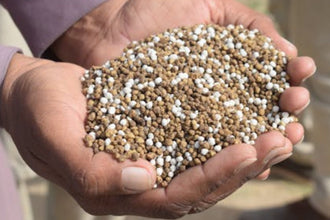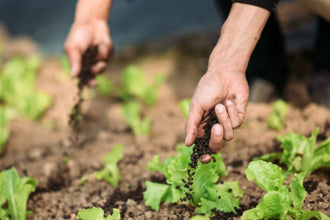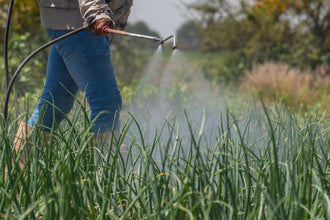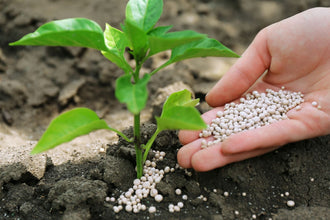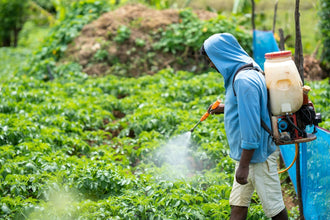Do you know what's in the oat-based foods you eat? According to a study by the Environmental Working Group (EWG), it could be Chlormequat, a compound you most likely haven't heard about.
It's found in numerous oat-based foods and can worry many. But what is Chlormequat, and why should we take note? Read on while we delve into the topic and help you understand why this might be worth your attention.
Understanding Chlormequat
Chlormequat is a chemical that helps plants grow better without getting too tall and weak. Farmers use it to ensure crops like wheat and barley stay strong and give more food. But some people worry about it. It might not be very safe to have it around because it could harm the environment or our health.
When people or animals come into contact with Chlormequat, it might cause health problems. For adults, it may be harder to have babies. For pregnant women, it could affect how their baby grows before it's born. There might be other health issues, too. Hence, it's crucial for scientists to keep checking and for everyone to be careful when using this chemical.
The Widespread Presence of Chlormequat in Oat-Based Foods
There's quite a bit of Chlormequat found in our everyday foods. Statistics or numbers collected by experts show it's in a lot of stuff we eat. We'll review some of these findings later on, but it's essential to know that Chlormequat is not rare in our food.
Differences in Detection Rates Between Organic and Non-organic Products
When we compare organic and non-organic foods, there's a difference. Organic food, which is farmed without chemicals, often has less Chlormequat. This doesn't mean it's always free of Chlormequat, but the rate of finding it is usually lower. On the other hand, non-organic food, which uses chemicals, often shows more Chlormequat.
Foods That Have Been Found to Contain Chlormequat
Chlormequat can be found in quite a few types of food. Here is an ordered list of some common ones:
- Oat-based cereals
- Granola bars
- Wheat-based products (like bread)
- Barley-based dishes
- Some kinds of desserts (like certain pies and cakes)
Remember, just because the food might have Chlormequat, it doesn’t mean it's necessarily unsafe. Scientists need to keep researching this so we can stay informed.
Consumer Exposure and Its Implications
Over time, the amount of Chlormequat in foods people eat daily has changed. A while ago, only a few people knew about it. But now, as scientists have started to look more closely, they're finding Chlormequat in more foods. This means that, without even knowing it, people might be getting more Chlormequat in their bodies than before.
Eating foods with Chlormequat regularly might not be suitable for our health in the long run. Here's why:
- It could make it harder for some people to have children.
- It may affect how a baby grows before it is born.
- There could be other unknown effects on our bodies that scientists are still learning about.
Eating a little bit occasionally isn't a big worry. But, if you eat many of these foods every day, it could be a problem. It's like when you overeat candy—it’s not great for your teeth or health. So, it's wise to be careful and eat various foods to stay healthy.
Regulatory Insights and Current Safeguards
In the U.S., there are rules about how much Chlormequat can be in food. These rules are there to make sure the food we eat is safe. The Environmental Protection Agency, or EPA, decides these limits. They look at much research to ensure that the amount of Chlormequat in our food won't harm us. But, even with these rules, it's vital to keep checking our food to ensure it stays safe.
The presence of Chlormequat was detected in tests on urine samples from people in the U.S. at the following rates:
- 69% in the samples collected in 2017
- 74% for samples collected between 2018 and 2022
- 90% for samples collected in 2023
Chlormequat was detected in most non-organic oat-based food samples collected from U.S. grocery stores in the summer of 2022 and spring of 2023. This was a reasonably high percentage, with the chemical found in 92% of the tested samples.
Regulatory Practices in Other Countries
Different countries have their own rules for Chlormequat. For example, European countries have stricter rules than the U.S. They allow less Chlormequat in food or check more often. Then, some countries might check less than the U.S. or Europe.
Seeing how different places handle Chlormequat can be helpful. It shows us different ways to keep our food safe. Most importantly, all countries try to ensure that the amount of Chlormequat in food is low enough not to cause health problems. This means that people are working to keep your food safe from too much Chlormequat no matter where you live.
Call for Greater Checks on Chlormequat Levels in Food and People
Since 2018, the EPA has approved using Chlormequat on foods from other countries, like oats. They even allowed more of it in our food in 2020.
However, some animal studies suggested Chlormequat could be harmful. Because more and more people in the U.S. are coming into contact with this chemical, another group called the EWG is calling for more checks. They want to keep an eye on how much Chlormequat is in our food and our bodies. They also think we should do more studies to ensure it's safe for us and animals.
Tips for Consumers
Choosing the right food can be tricky. Here are some pointers on selecting foods that are free from Chlormequat. Follow these tips for a healthier diet.
- Read Labels: Always read the labels on the food you buy. Products free from Chlormequat will often say "Pesticide-free" or "No Chlormequat."
- Ask the Store: If you need more clarification, ask someone there. They can help you find foods without Chlormequat.
- Online Research: Look up the brand or product online before you buy. Many companies will list how they make their food on their websites.
- Buy Organic: Foods with the organic label usually don't have Chlormequat.
Why Choose Organic Oat Products
You might wonder why organic oats are better. There are a few good reasons to pick them over the regular kind. Let's learn why organic oats can be better for us and our planet.
- No Pesticides: Organic oats are grown without harmful pesticides like Chlormequat. So they're safer to eat!
- Better for Us: Organic foods, like oats, are usually healthier than non-organic foods. They often have more nutrients that are good for our bodies.
- Helps the Planet: It's better for the Earth when farmers don't use harmful pesticides. So, eating organic can help keep the world healthy, too!
Urging for Safer Measures
The EWG has a list of things they want the government to do to help keep our food safe. They believe these steps can help reduce the risks related to Chlormequat. Here's what they're recommending.
- Check More Often: The EWG wants the government to check food for Chlormequat more often to ensure safety.
- Control Use: The EWG also thinks the government should control how much Chlormequat farmers can use. This can make our food safer.
- Share Information: The government needs to tell us about Chlormequat and its risks.
Actions For Us Consumers to Ensure Safer Food
Getting involved in food safety:
- Educate Yourself: Learn more about what goes into your food, such as Chlormequat. Knowing about different pesticides can help you make better choices.
- Speak Up: When you're at the grocery store, don't be shy! Ask questions about where the food comes from and if it's been treated with Chlormequat or other chemicals.
- Choose Wisely: Go for products that are labeled organic or pesticide-free. These are often safer than others.
- Spread the Word: Chat with your family and friends about food safety. The more people know the more they can choose safer foods.
- Support Farmers Markets: Buy your food at local farmers' markets, where you can talk directly to the farmers about how they grow their crops.
- Voice Your Concerns: Write to the companies that make your food, telling them you want products without harmful chemicals. You can also write to your local government representatives to let them know you care about this issue.
- Use Social Media: Share your support for food safety measures on social media. A simple post can raise awareness among many.
We can impact food safety by learning, sharing, and choosing wisely. Every single one of us can help make our food safer for everyone.
Conclusion
The optic of chlormequat in common oat-based foods poses a seldom-discussed health risk, highlighting the ongoing deficit in America's dietary safety. This underscores the urgent need for a shift to organic farming practices. Organic gardening eschews synthetic additives such as chlormequat, safeguarding our health and the environment. It enriches the soil naturally, promoting a healthier crop yield free of harmful residues.
In choosing organic, we're not just opting for nutrient-rich foods, but we're also investing in a sustainable system that bolsters public health and environmental well-being, therefore, counteracting threats like the one posed by chlormequat.




